Perhaps no architectural style has been more cruelly reinterpreted in the modern era than the classy and distinctive French Second Empire style (also called the Mansard style).
With its iconic curved and slate shingled faux roof attic level, the Second Empire style was enormously popular all across the country in the late Victorian era. Often chosen for impressive mansions or public buildings, the style was also employed more modestly for late 19th century row houses. It is easily identified by its most distinct design feature – a dual-pitched hipped roof structure, often with small dormer windows on the roof slopes and elaborate cornices. In many instances, roof slates of different shapes and colors were used to further ornament the four (or more) roof slopes.

Second Empire house on Water Street in Loch Haven.
The history of the mansard roof itself is fascinating. It takes its name from influential French architect Francois Mansart (1598–1666), who employed it extensively in the beautiful buildings he designed in 17th century France. At that time the use of mansard roofs allowed property owners to avoid paying Paris city taxes on the top floor of their buildings, because taxes were assessed on all floors below the roofline.
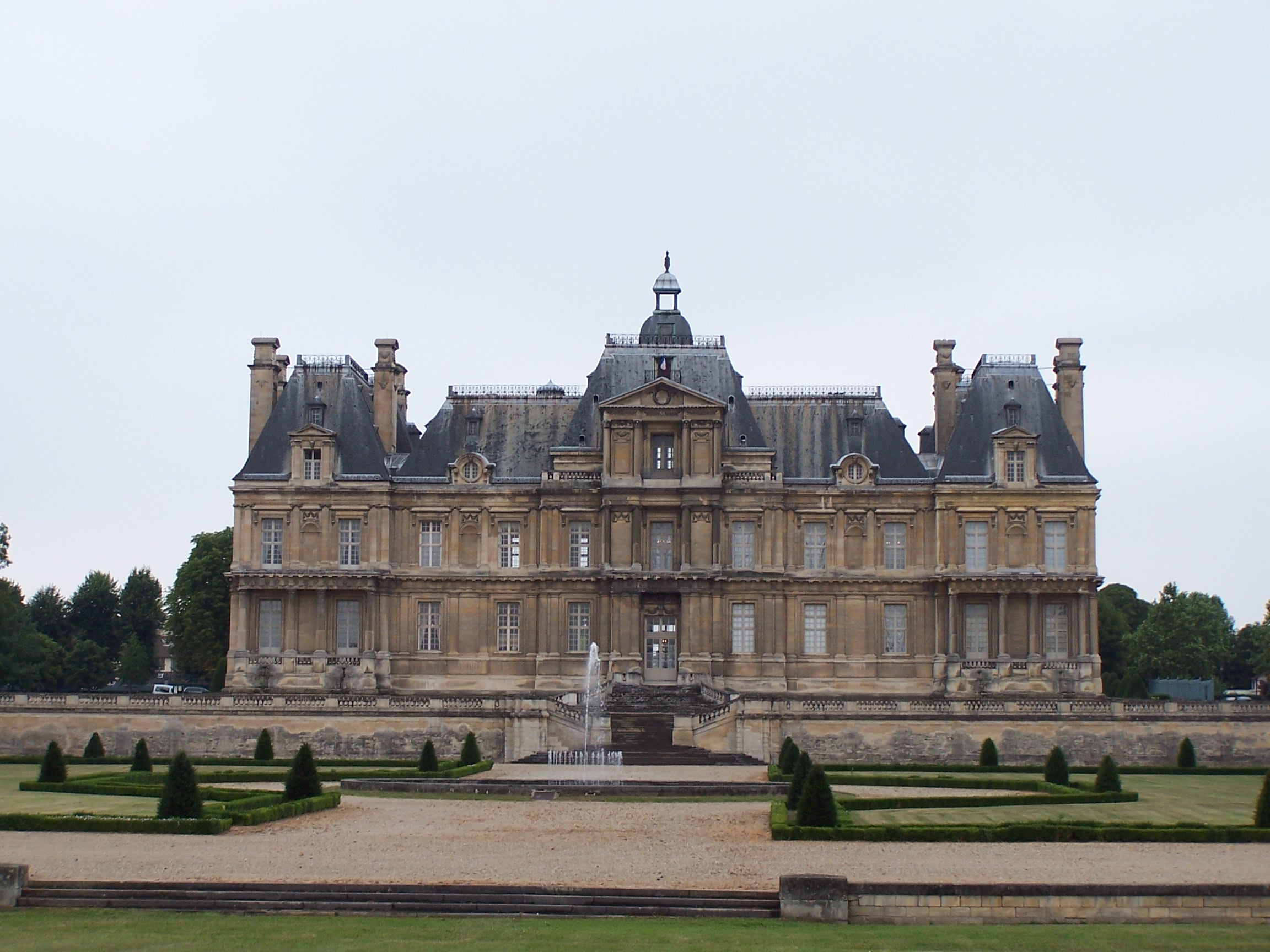
Château de Maisons-Laffitte in Maisons-Laffitte built by François Mansart. By Galichonj (?) [GPL (http://www.gnu.org/licenses/gpl.html)], via Wikimedia Commons.
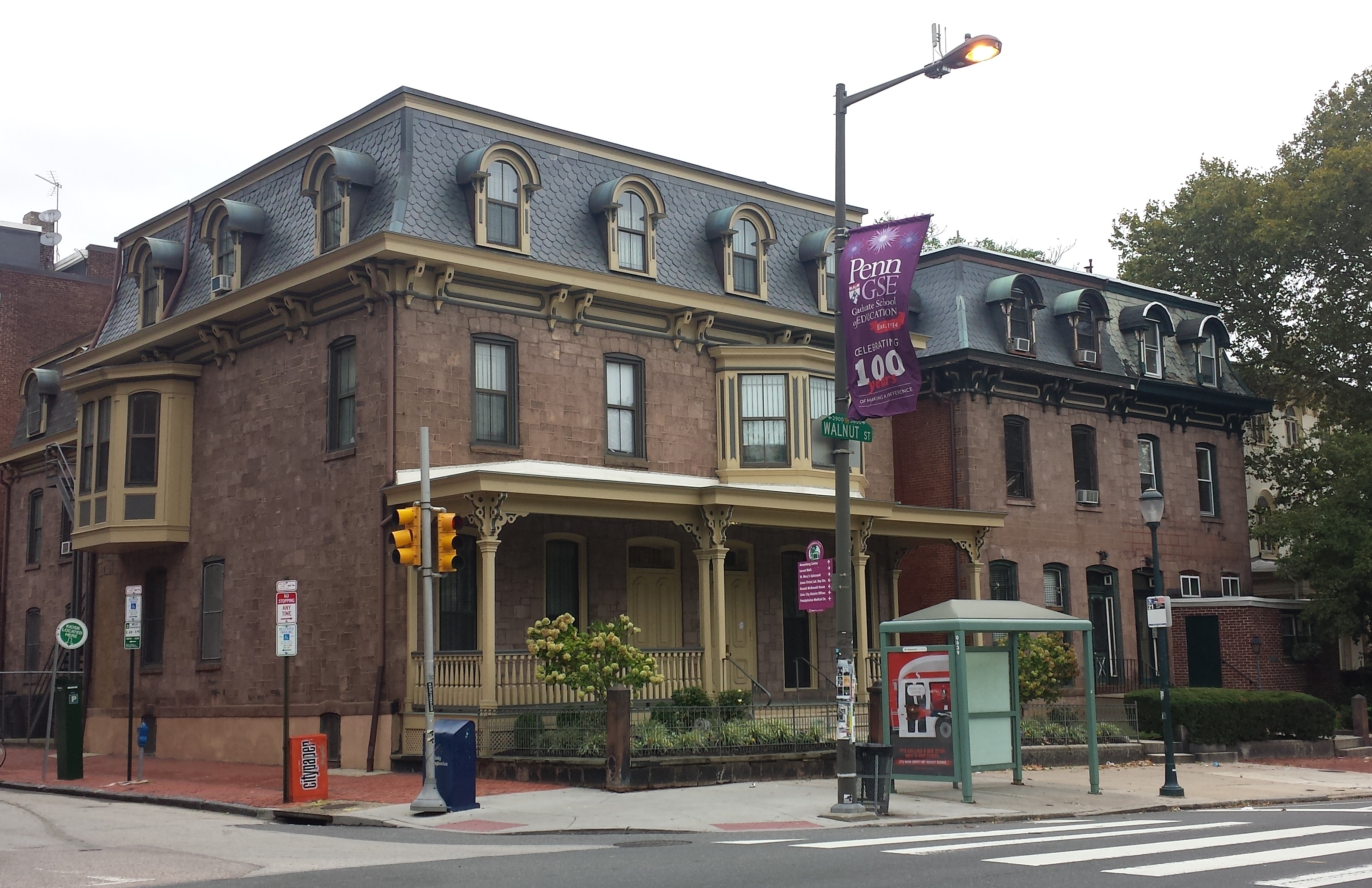
Second Empire buildings in West Philadelphia. Note the fish scale shingles, rounded dormers, and heavy wood cornices.
As the architectural style spread from France to England, Europe, and the United States, it was embraced as part of the “picturesque” movement in American architecture, which emphasized the creation of buildings inspired by the romanticized past and designed to complement the beauty of their natural environment. The Italianate and Gothic Revival styles are most closely identified with the picturesque movement since their basic forms and decorative details came from an idealized version of the past. However, the Second Empire style, modeled on buildings then popular in mid to late 19th century France, was clearly part of the picturesque movement as well. British-American architect and landscape designer Calvert Vaux included examples of the Second Empire style in Villas and Cottages, his 1857 pattern book for picturesque houses.

Vaux’s design No. 38 is a classic example of the Second Empire style for domestic buildings.
American enthusiasm for the style grew with the construction of two impressive public buildings, Charity Hospital (1858) in New York City and the Corcoran Art Gallery (1859) in Washington, DC, both designed by outstanding American architect James Renwick Jr. Renwick is best known as the designer of Saint Patrick’s Cathedral in New York City, a masterpiece of Gothic Revival style completed in 1879.

The Renwick Gallery, a branch of the Smithsonian American Art Museum, located at 1661 Pennsylvania Avenue, NW in Washington, D.C. By AgnosticPreachersKid (Own work) [CC BY-SA 3.0 (https://creativecommons.org/licenses/by-sa/3.0)], via Wikimedia Commons.
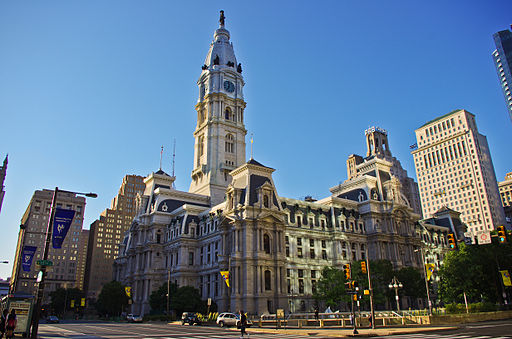
Philadelphia’s City Hall. By Antoine Taveneaux (Own work) [CC BY-SA 3.0 (https://creativecommons.org/licenses/by-sa/3.0)], via Wikimedia Commons.
While hundreds other well-preserved examples of this picturesque style remain throughout the commonwealth, some Second Empire style buildings have not been so kindly treated in the intervening years. Remuddling (which is the term for inappropriate remodeling which removes or covers a building’s character giving architectural features) occurs often with all styles over time, but the mansard roof has been a too frequent target.
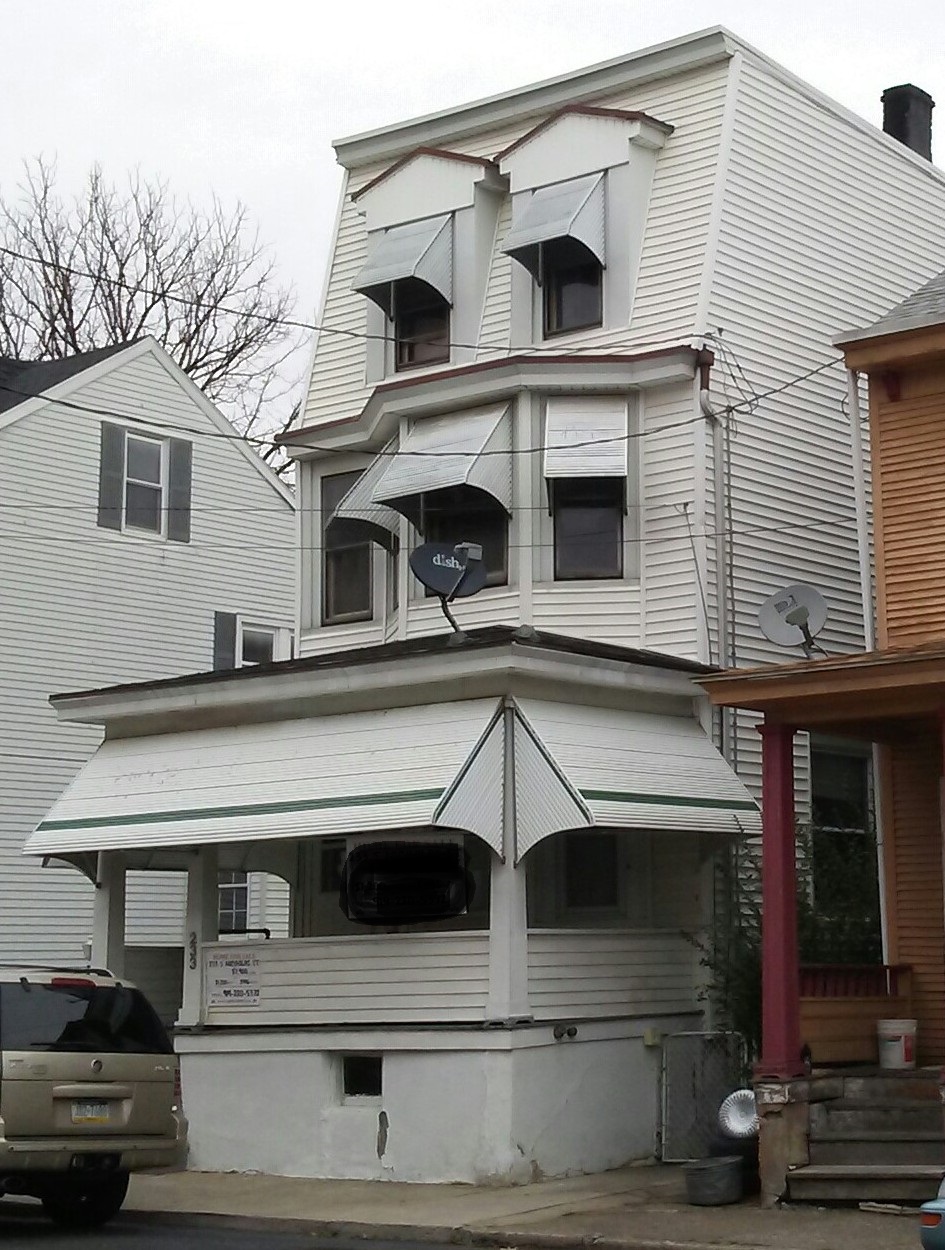
The original mansard roof on this house has also been covered with aluminum siding.
What has really puzzled some architectural historians is the development of supersize mansard roofs on both old and more recent buildings. Neo-Mansard has been suggested as a style moniker for late 20th century buildings with bold mansard roofs but none of the other design features of the Second Empire style. Sometimes those creative efforts to rethink this well-known building feature work well and other times the results seem a bit over the top.
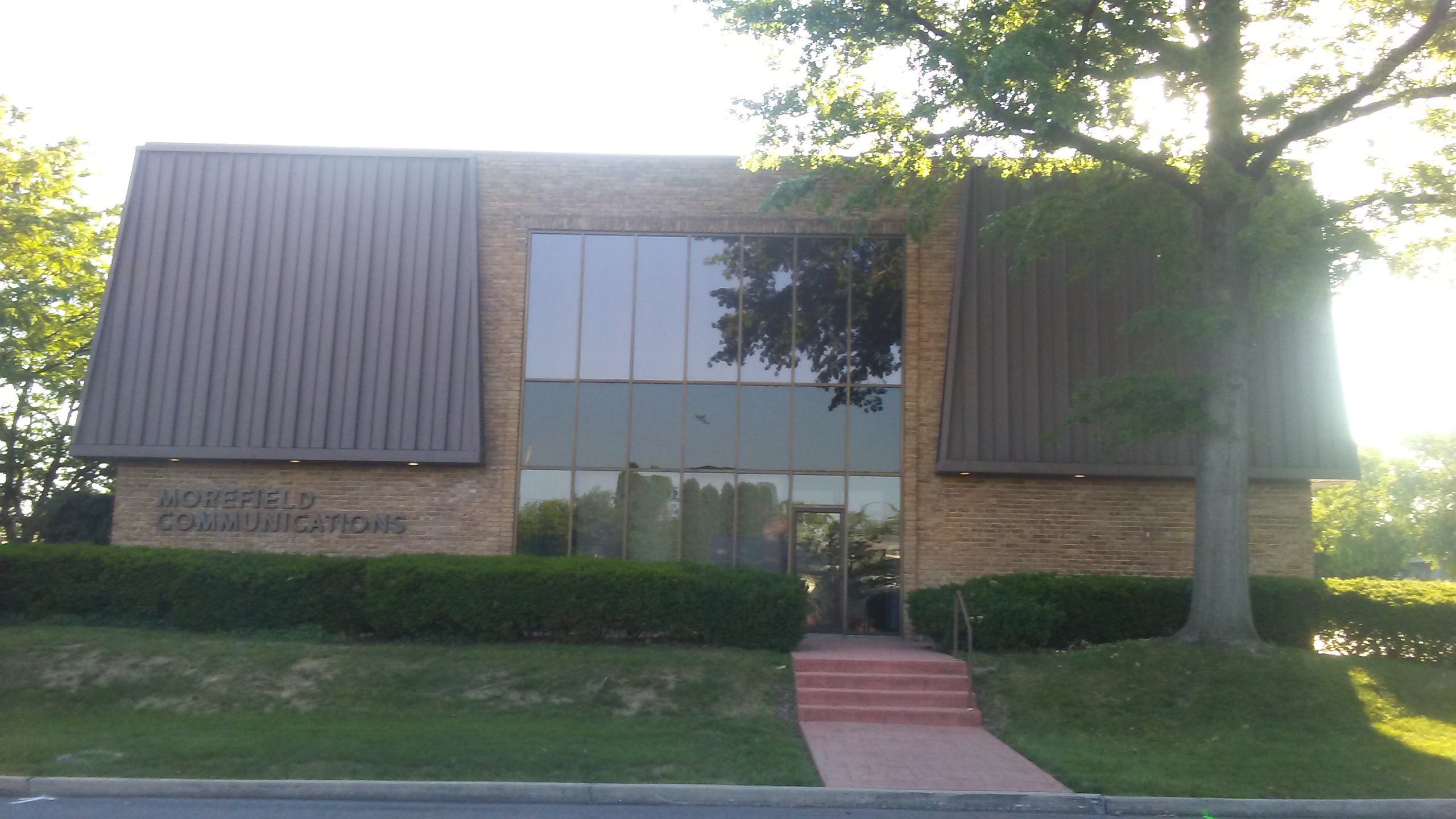
Mid-20th century Neo-Mansard commercial design in Camp Hill.
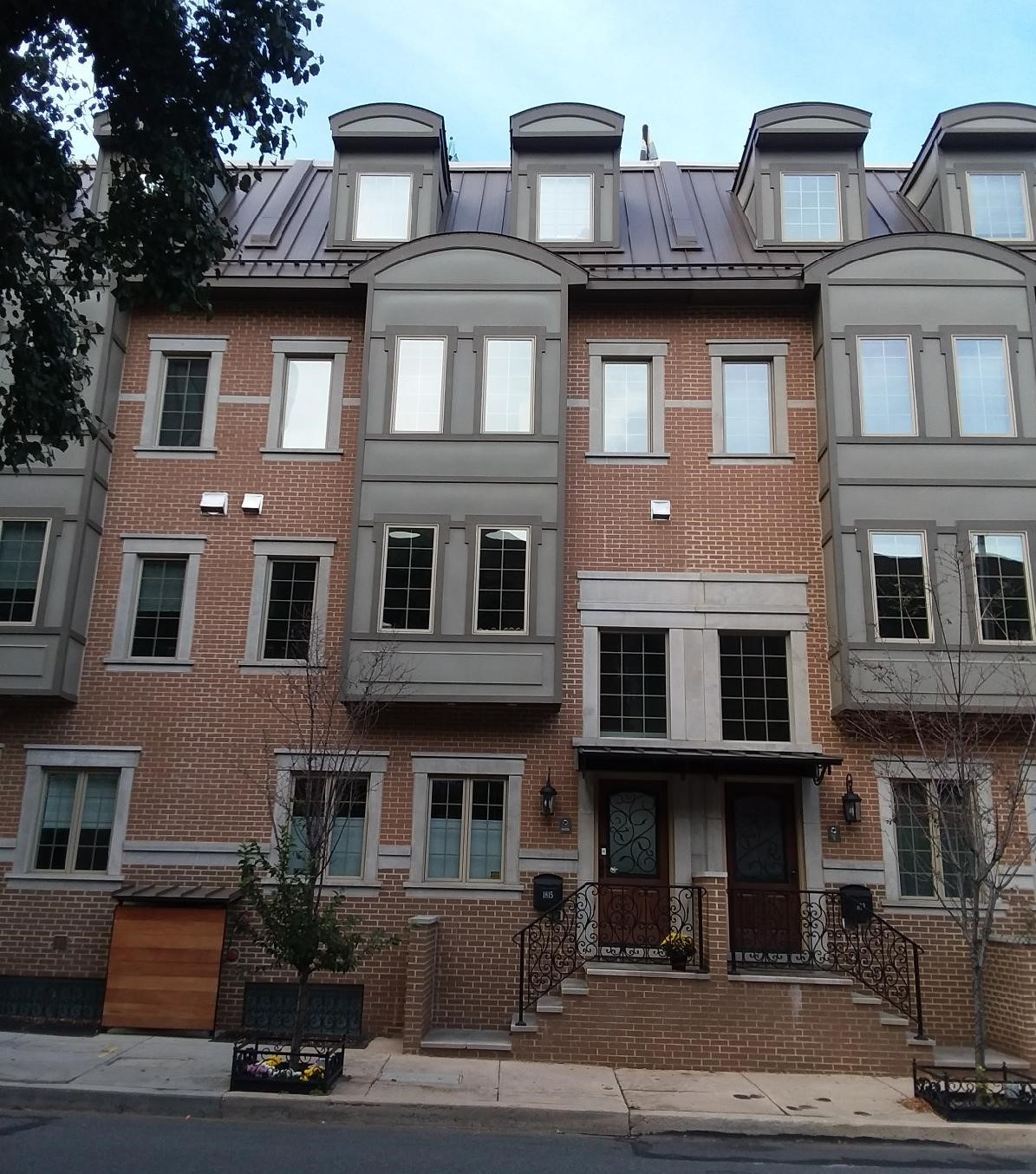
21st century new Second Empire Style rowhouses in South Philadelphia.
As all those who appreciate architecture know, beauty is often in the eye of the beholder and what seems a bit much to some, might delight other less compartmentalized thinkers or architectural history buffs.
There are so many great mansard roofs throughout Pennsylvania. Share yours with us in the comments section of this post or email us at mail@pahistoricpreservation.com!
Comment Policy
PHMC welcomes and encourages topic-related comments on this blog. PHMC reserves the right to remove comments that in PHMC’s discretion do not follow participation guidelines.
Commenters and Comments shall be related to the blog post topic and respectful of others who use this site.
Commenters and Comments shall not: use language that is offensive, inflammatory or provocative (this includes, but is not limited to, using profanity, obscene, or vulgar comments); disparage other commenters or people; condone illegal activity; identify the location of known or suspected archeological sites; post personal information in comments such as addresses, phone numbers, e-mail addresses or other contact details, which may relate to you or other individuals; impersonate or falsely claim to represent a person or an organization; make any commercial endorsement or promotion of any product, service or publication.
If you would like to comment on other topics not related to this blog post but related to PHMC, please fill out the PHMC Contact Us Form.
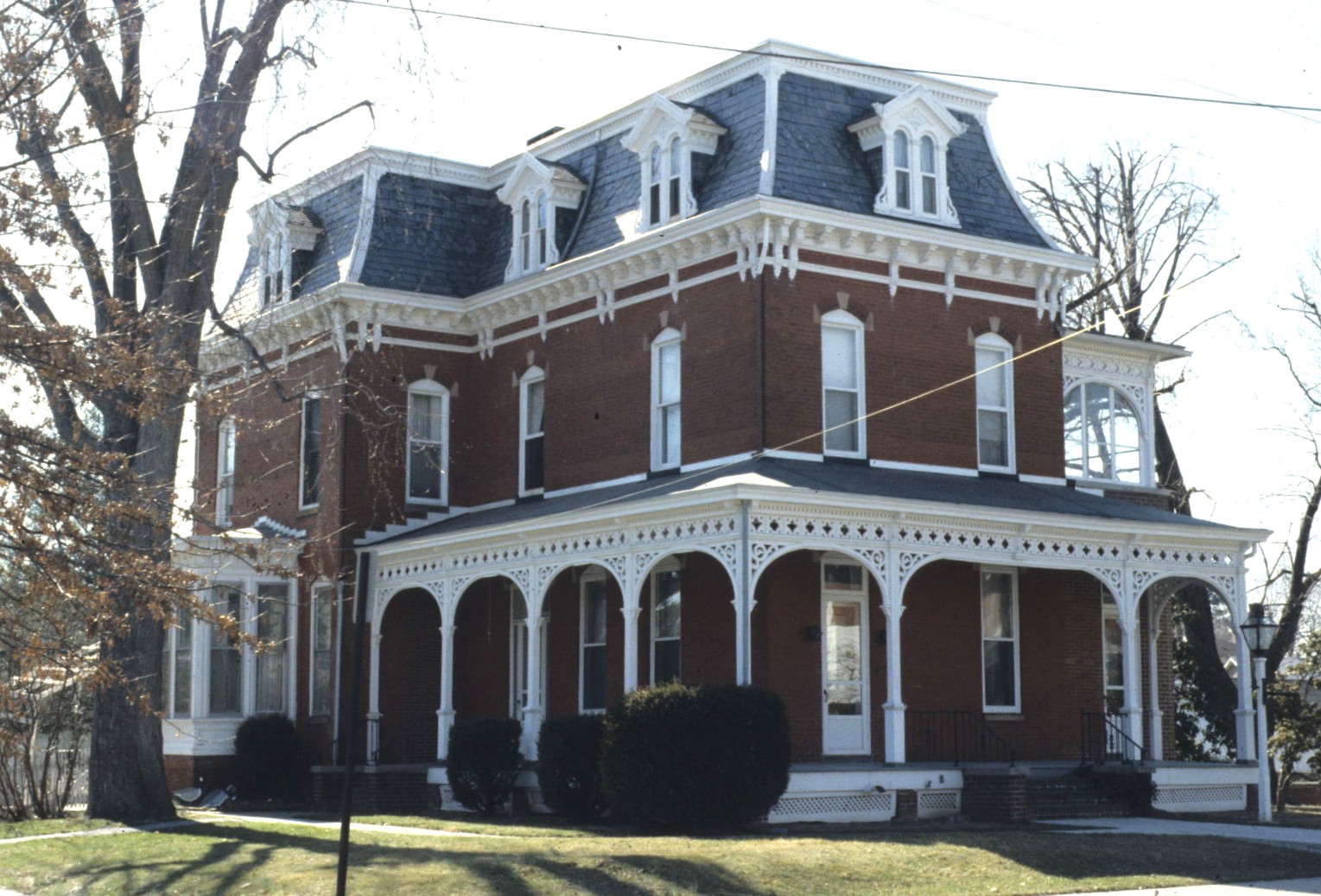
One of my favorite parts of Architectural history is the Mansard Roof! So glad to see someone else enjoys them as much as I do.
Thank you so much for this great take on the downfall of 20th century architectural